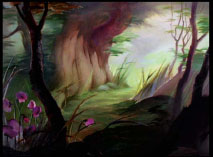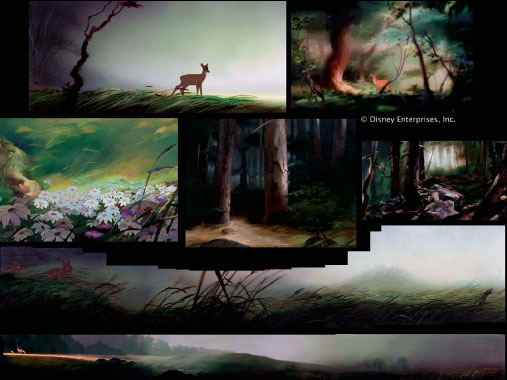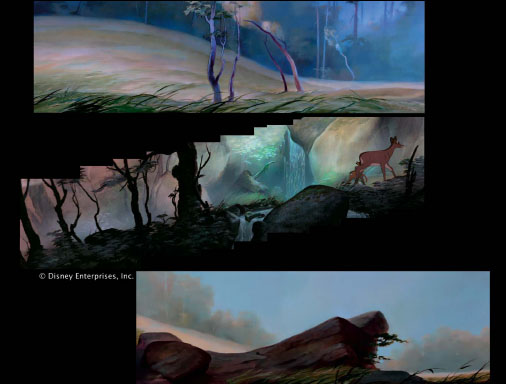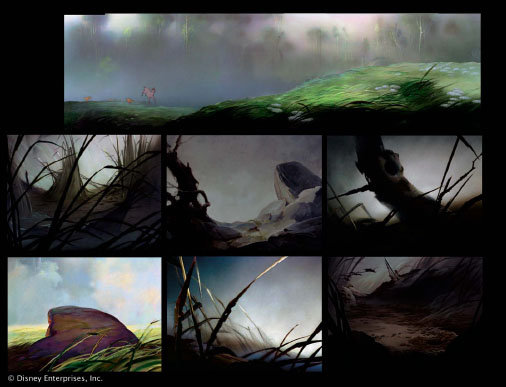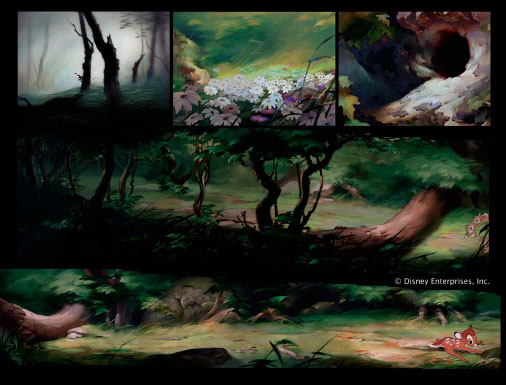THE MASTERS
The backgrounds you will see on the next pages have never existed this way. The last time a cameraman saw them like this was when he checked the picture for shooting through the viewfinder of the multiplane camera.
The images that you see here were painted in several layers on glass to create depth.
After the scenes were shot and checked, the glass was scraped off, cleaned and prepared for the next set of paintings.
I always wanted to see these masterpieces in their full size because you only see a small part of the full-sized background at one time in the movie.

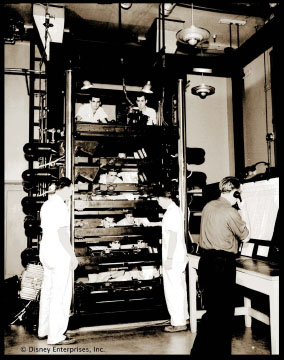
Here is what I wrote down after a tour through the camera department:
There were three rooms with 5 m high ceilings and three multiplane cameras, including one very old camera stand that had been used first in the thirties. On a big shelf they stored a lot of different-sized glass levels from older movies, foregrounds about 18 X 24 cm, the final lowest BG’s about 40 X 60 cm. Every single level could be moved east/ west, as well as north/south.
On the walls were huge cupboards with light controlling devices. The intensity of the light had to be increased the further you went down through all the levels since they had to compensate for the thickness of the glass levels.
In the old days, it took them about four days to mount and prepare one scene. The single-glass levels were about 100 kg (250 pounds) and had to be carried by four men. Then it took another three days to shoot the scene. Scenes with effects such as shadows, fire, water or snow were especially complicated and time consuming. They had to shoot most of them with masks (upper lights/ lights from below). The water effect was done with a special glass level that had bubbles built-in to create the out-of-focus/in-focus water effects. Only one of these glasses was left. The same results were achieved later with rubber-cement glue on cells. Shadows were done by shooting the scenes twice, 30%/70% or 50%/50%; the first with the black shadow on cell, the second time without. The result was transparency. Fire was always a double or triple shot with different out-of-focus exposures for the glowing effect. Snow was filmed in live action with falling corn flakes in slow motion and then hard-contrast copied into the final scene. But the most complicated thing was to match the different levels and the animation on them. Up to eight people were working at the levels and camera with more on checking the exposure sheets.
The lower the animation level, the lighter the colors of the characters had to be, to match the increasing darkening effect of the thick glass. We saw in the Color Department special instructions for that. Amazing! During the production of Snow White and the Seven Dwarfs, the exposure time was about 20 seconds with a very small aperture because of the depth of field. With better technology they could lower it down to 8-10 seconds during the production of Peter Pan. Imagine, there are 24 frames per second! It took 4 minutes of pure shooting time for 1 second of film. That explains why there are only a few multiplane shots in these old masterpieces. It was just too time consuming and expensive.
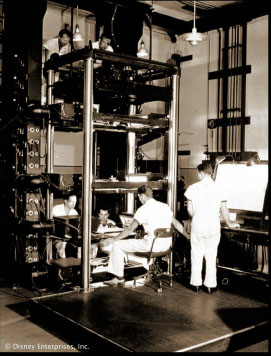
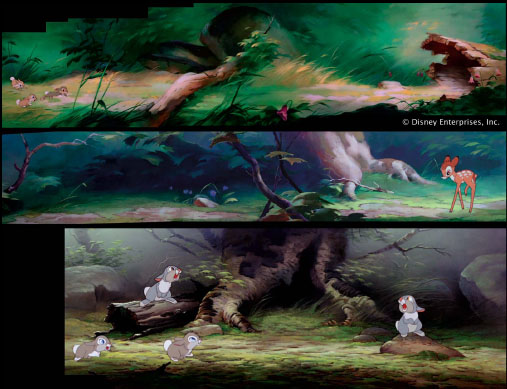
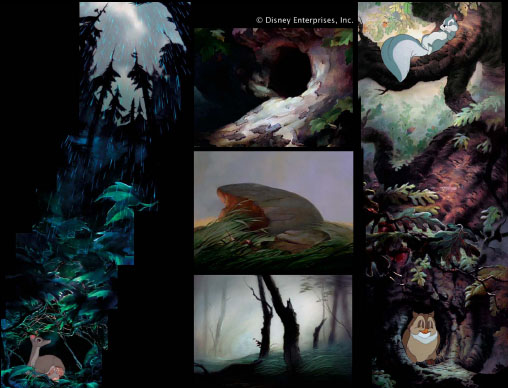

This is for everybody who wants to learn from the masters. With image capture software you can grab very precise key frames of camera pans. These frames can be mounted together and touched up a bit in Photoshop to recreate nearly the identical original background that was used for the film. I guess not too many people know that in the case of Bambi, only a few backgrounds are left in the Disney archives. Most of the film’s scenes were several layer multiplane combinations, which means that the different foreground and middle-ground layers had to be painted on glass. That’s how the incredible depth and focus effects were achieved. The only painting technique that could get the soft washes of the foliage and grass in the
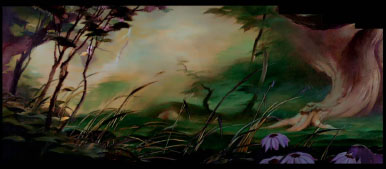
forest, as well as the snow and burning forest towards the end, was oil painting. Now the sad part — it was war time, the second world war, and resources were short. To save glass and costs, the oil painted BG’s were scraped off the glass layers and the glass was reused for the next multilayered painting. There is only one complete multilayered glass set with oil painted trees that was used in the Disney documentary Tricks of Our Trade, produced in February 1957 for the Disney tv series. In one part of the show Walt Disney explains the multiplane camera and they simulate the work on the opening shot of Bambi, explaining in detail how the depth was achieved with all the different glass layers.
